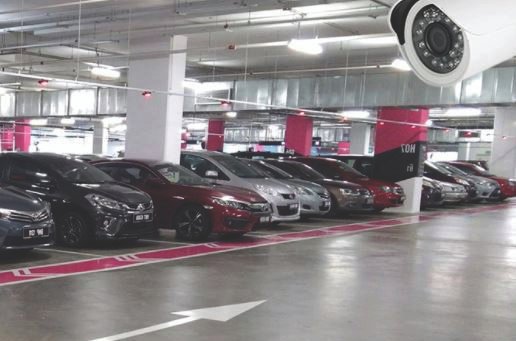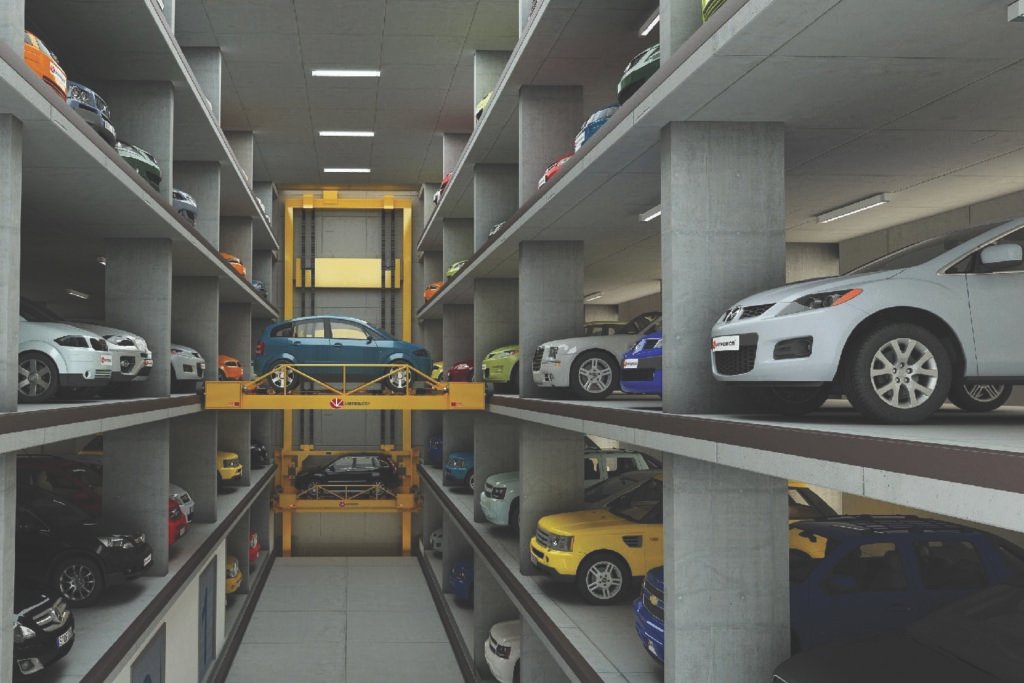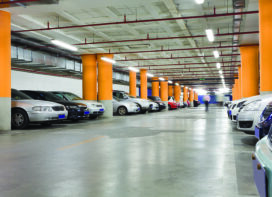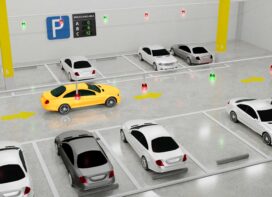
Parking, traffic and infrastructure development are deeply intertwined with each other, as the search for car-space can lead to traffic congestion, delays, and higher emissions. Sid Jalan explores the parking management market and the technology enabling the next generation of mobility.
The modern urban landscape has evolved at a staggering pace, leading to unprecedented levels of congestion. The age-old approach to parking, often marked by outdated systems and ambiguous regulations, struggles to adapt. Car owners grapple with inconsistent pricing models, murky parking policies, wasted private spaces, and the misuse of handicapped spots. Parking management solutions are now at the forefront of addressing these issues, trying to offer drivers a seamless and optimized experience.
The parking management market is poised for remarkable growth, with global projections ranging from USD 6.3 billion to USD 7.4 billion by 2028. The Asia Pacific region spearheads this expansion due to escalating vehicle numbers and surging demand for parking, with investment in the sector further enhancing the region’s adoption potential.
However, despite its growth, the market appears fragmented, with various providers catering to specific segments and sub-segments. These providers leverage automation and technology to optimize the parking ecosystem.
An official in charge of parking at a city mall says, “The total number of registered motor vehicles in India was 210,023,289 in 2015 and there were States having more than 10 million vehicles. Most of the parking systems in India are currently run manually, with limited or no technology intervention. This leads to higher costs, a lack of efficiency and not a very optimised usage of the parking spaces that already exist. Implementing a high-tech automated parking management system can solve these problems.”
The current scenario in India
In a country like India, parking management assumes heightened importance. The current landscape is rife with manual parking systems, resulting in inefficiencies, increased costs, and suboptimal space utilisation. The integration of high-tech automated parking management systems is a potential remedy for these challenges, promising cost-effective efficiency and optimal usage of space.
According to a report by Research and Markets, India’s smart parking market is estimated to reach USD 350 million in 2023 and grow to USD 593.63 million by 2028, at a CAGR of 11.11%.
Automated parking systems are being utilised in the country by some of the major players in the field. The report further breaks down the Indian market based on Type – Off-Street and On-Street, Components — Parking sensors, Steering angle sensors, Electronic control unit and Display unit; Technology — IoT, Ultrasonic and RFID; Application– Security and Surveillance, Smart Payment systems, E-Parking and LPR, and End-User — Commercial, Government-use and Transport Transit.
The current systems provide –
– On-demand, smart and hyperlocal parking services with online slot booking.
– Parking Guidance with occupancy detection through camera sensors.
– Automated payment through integrations with smartphones or FASTags, thereby removing physical tickets.
– Real-time information of parking locations and views of parking structures.
– Attendants and valets, who are GPS-tagged and OTP-verified for security purposes, provide customised services.
– HD cameras, proprietary software, and easily navigable dashboards.
– Parking Access control through QR code, UHF and RFID card based solutions.
– Different levels of automated and robotics parking systems, with varying manual intervention.


Arun Ganesh Narayanan, Director, Sales and Marketing, Ravel Movement Control Pvt. Ltd. says, – “Pre-booking parking spots through mobile apps or online platforms allows drivers to secure parking spaces in advance, ensuring convenience and reducing the risk of finding no available parking. Mobile apps can direct drivers to available parking spaces in real-time, reducing congestion and minimising the time spent searching for spots. It allows users to pay for parking through smartphone apps. This streamlines the payment process and can include features like extending parking sessions remotely.”
This is made possible with Internet of Things (IoT) sensors, which provide real time access, monitor parking spaces, and enhance control for the operators. Through IoT-generated data, available spots are identified and users can be guided or allowed to reserve spaces. Additionally, dynamic pricing can be implemented based on parking availability. Combining IoT with technologies like License Plate Recognition (LPR) enables seamless entry by connecting a car’s license plate to the provided data, facilitating gate access.
Artificial intelligence and machine learning algorithms are being utilised to analyse data from various sources to predict parking demand and optimise parking space allocation. Data is analysed to understand the average occupancy per day or per hour, identify peak hours for managing entry / exit lanes etc.
Arun Ganesh Narayanan


Gaurav Balani, DGM-Marketing, Infiniti Mall says, “To enhance parking management, integrating sensors and cameras for real-time parking occupancy updates is key. Displaying live availability at entry points or developing a mobile app for pre-arrival status could streamline the parking. Pairing it with cashless payment options will maximize efficiency for an improved experience.”
AI-Powered Parking Solutions: Shaping the Future
Artificial Intelligence (AI) has taken over the discussion on every single front, and parking is not far behind. AI-driven smart parking services can leverage hardware and software to streamline parking management, potentially revolutionising the industry.
A fully automated parking system with no human intervention would be a game-changer for us which would ensure a seamless entry and exit for our guests.
Gaurav Balani

Ajay Masur, CEO – JAAN Innovations Pvt. Ltd. adds, “The present and future of AI-powered Parking Solutions hold tremendous potential. AI algorithms constantly analyse parking data, predicting occupancy patterns, and optimising parking space allocation. As AI continues to evolve, it will further enhance parking management efficiency, increase revenue opportunities, and offer personalised parking experiences for users.”
AI’s influence extends across various parking management facets:
Parking Utilisation – IoT tools enable real-time tracking of parking occupancy and empty spaces. This data, routed through AI, can empower parking managers to fine-tune their strategies while offering drivers up-to-date parking information.
Predictive Analytics – AI-powered solutions generate predictions and forecasts based on historical data and external factors. By factoring in variables like peak hours, weather, and past user behaviour, the system provides valuable insights for space owners.
Dynamic Pricing – A large potential use-case of AI, real-time pricing adjustments based on availability and demand can optimise space utilisation, encourage off-peak usage, and reduce congestion.
AI and Robotic Parking – By allowing AI to make real-time changes and optimise the robotic movement, automated stacked parking systems might be able to unlock higher levels of efficiency and reduce the time to park/retrieve cars. Self-driving cars will further reduce the throughput.
Automated License Plate Recognition – ALPR cameras utilise optical character recognition technology to read license plates, granting automatic access to parking spaces. The efficiency and sensitivity will increase with the deployment of AI technology.
Integration – AI-powered parking solutions can be integrated with navigation systems, to offer drivers with real-time guidance based on their destination. As more advanced sensors, communication systems, and cameras are deployed, traffic congestion can be reduced and space utilisation increased.
Personalization – Personalised driver profiles can be created to offer customised parking options based on a customer’s usage patterns and preferences. AI can account for the customers shopping or idle patterns, recommending parking spots based on these criteria.
Computer Vision and Machine Learning plays a crucial role in processing parking data and generating valuable insights. Our sophisticated algorithms analyse historical and real-time data to predict parking space availability, optimise traffic flow, and allocate resources effectively.
Ajay Masur

 Vishal Jajoo, MD – Jajoo Automation states “With the present scenario, we have many parking plazas that are not effectively used – Some are over-parked and some are empty. With AI, we can manage the over-parked plazas by adding more space or using nearby Society parking. Also with AI, we can understand the time frames for high demand, which can be calculated by parking duration. Once all this data is gathered, we can focus on increasing the space within that area and use empty parking plazas for a different avenue.”
Vishal Jajoo, MD – Jajoo Automation states “With the present scenario, we have many parking plazas that are not effectively used – Some are over-parked and some are empty. With AI, we can manage the over-parked plazas by adding more space or using nearby Society parking. Also with AI, we can understand the time frames for high demand, which can be calculated by parking duration. Once all this data is gathered, we can focus on increasing the space within that area and use empty parking plazas for a different avenue.”
With AI, we can understand the time frames for high demand, which can be calculated by parking duration. Once all this data is gathered, we can focus on increasing the space within that area and use empty parking plazas for a different avenue.
Vishal Jajoo
What does automation bring to parking management?
Parking management system systems can be of four different types or a combination of these – Manual, Hardware-focused, Software-focused, Office-centric. Utilising software-based payment integration, real-time visibility, reporting and controlling access are some of the important features included in these parking management systems.
Traditional parking management systems are grappling with the exponential growth of urban areas. Leveraging automation could be a game-changer, which is designed to optimise the use of available space, enabling businesses and municipalities to accommodate more vehicles within limited real estate. This becomes particularly crucial in densely populated areas where land is at a premium.
Some of the benefits of implementing these systems:
Efficiency – Automation introduces efficiency into parking management by significantly reducing the need for drivers to endlessly circle parking lots in search of an open space. Real-time data and smart algorithms guide drivers to available spots, saving time, energy, and congestion.
Reinforcing Security – Automated parking systems come with built-in security features that elevate vehicle protection. Surveillance is no longer confined to daylight hours or security personnel availability. Cameras and sensors work in tandem to monitor the parking lot 24/7, enhancing security and deterring potential incidents. Access to private parking areas can be tightly controlled, ensuring that only authorised vehicles can enter.
Cutting Labour Costs – Traditional parking systems often rely on manual labour for tasks such as directing traffic, issuing tickets, and managing payments. These operations require dedicated personnel and are susceptible to human errors. Automated parking systems dramatically reduce the need for manual intervention, allowing operators to allocate resources to tasks that genuinely require human oversight.
Streamlining the Parking Experience – Automated parking simplifies the process and offers a smoother, more streamlined experience. Drivers no longer need to navigate through a maze of parking lanes and are instead guided directly to available spaces, minimising stress and enhancing user satisfaction. Moreover, security features like constant surveillance and controlled access add to the user confidence.
Future-Proofing Parking – As urban populations continue to surge, the challenges of parking management will only intensify. Automation offers a forward-looking solution that simultaneously addresses these challenges while enhancing the overall parking experience. The synergy of technology, efficiency, and security will play a pivotal role in shaping the future of parking management.
Balani says, “We aspire to incorporate cutting-edge technological advancements not just from leading malls abroad, but we also keep a track on technological advancements which can be incorporated into our daily operations at the mall. Sensor-based signage would significantly enhance wayfinding in the parking area, making it much easier for visitors to locate available spaces. We are currently looking at adopting new innovations to further elevate the parking experience.”
Green Parking: Navigating a Sustainable Urban Future
In a world grappling with escalating pollution levels, the role of parking management has gained newfound significance as a crucial player in addressing environmental challenges. Searching for parking spaces can increase emissions due to idle time, congestion and excessive driving.
Parking regulations, eco-friendly transportation modes, embracing shared parking concepts, optimising space utilisation, promoting responsible land use and integration of EV charging infrastructure within parking facilities align parking operations with the larger drive for reduced carbon emissions and a greener urban landscape.
Challenges with Parking
The path to smarter parking is not without obstacles:
- Urban Planning Mismatch – Cities with inadequate parking infrastructure struggle to accommodate rising vehicle numbers. This is exacerbated by increased activities in commercial and government areas, with incorrect planning leading to inadequate solutions.
- Land allocation – Parking management solutions work only if adequate space has been allocated for parking systems, including curb and street-level parking areas. This becomes especially tricky for multi-storey parking structures and automated stack systems.
- Electric Vehicle (EV) Charging – The transition to EVs necessitates charging infrastructure, demanding parking spaces to evolve. This would require more space allocation, energy sources and potential safety mechanisms.
- Data Security – As IoT-generated data grows, maintaining data security will be a key challenge for companies in this sector. The sensors and systems continuously generate data, which is processed and stored in the cloud. Many IoT systems are connected to a variety of networks – Public networks may not be so protected and are vulnerable to cyber threats and breaches.
- Transitioning – As most systems in India are still manually-controlled, the transition to a tech-driven system will require careful planning to ensure accessibility for all users. These challenges will be essential to gain trust and encourage widespread adoption.
Masur says, “Our R&D team explores emerging trends, such as integrating smart city infrastructures, exploring sustainable parking solutions, and implementing advanced AI algorithms for even more optimised parking experiences, such as – Vehicle Make, Colour & Model Recognition Solution, Driver/Visitor Face Recognition System, Automated Vehicle Segregation Solution between Commercial, Private & Electric vehicles, Use of Parking Drones for parking space availability, etc.
Anticipating the Future: Intelligent Cities and Parking Evolution
Parking management has emerged as an indispensable facet of urban planning and smart city evolution. The trilemma of traffic congestion, pollution, and space mismanagement assumes importance, demanding innovative parking solutions as part of the overarching strategy for urban progression.
Smart parking envisioned:
- Leveraging Profitable Opportunities – The convergence of automation and parking management translates into an augmented revenue stream. Automated systems effectively monitor vacant parking spaces while enabling drivers to prebook slots. This ensures optimal resource allocation and transforms parking areas into lucrative assets within urban landscapes.
- Easing Traffic Flows – A pivotal aspect of smart parking management lies in its capacity to provide real-time traffic updates. Armed with this information, drivers can make informed decisions that steer clear of extended waiting times and traffic bottlenecks. These real-time insights foster reduced congestion and heightened traffic efficiency.
- Zoning for Equitable Parking – Employing advanced technology, parking zones can be tailored to regulate parking hours and accommodate specific vehicle types. This mechanism promotes a balanced distribution of parking, curbs violations, and fosters equitable utilisation of parking resources.
- Autonomous Vehicle Integration – Smart parking solutions, in tandem with autonomous technology, empower vehicles to autonomously locate and navigate available spaces, offering a glimpse of a future where parking hassles become history.
According to Jajoo cloud computing is gearing up very fast which will help in high data-capture at accurate time and get the most efficient data for future analysis. “One more innovation is Magnetic-base sensor, which will be fitted on the ground and send signals to the server. This will include time duration and car number plate, allowing for instant payment through tags.”
“Integration with digital assistants like Siri, Google Assistant, or Alexa will enable users to reserve parking spaces using voice commands or through AI-powered apps,” says Narayanan. “Smart dynamic displays along roadways can provide real-time information about available parking spaces, guiding drivers to nearby parking facilities efficiently. Parking management systems will increasingly focus on sustainability, incorporating features like solar-powered infrastructure, green rooftops, and EV charging stations to support eco-friendly practices.”
Masur feels that the future of Parking Automation looks incredibly promising. “We envision integrating emerging technologies like autonomous vehicles, vehicle segregation by dividing vehicles as Commercial Vehicles, Private Vehicles and Electric Vehicles, Occupancy Detection through Smart Drone’s Solution, IoT Camera based wired/wireless sensors, vehicle make & model detection, Face Recognition system and smart city infrastructures to create a seamless and intelligent parking ecosystem. Additionally, predictive analytics and real-time data insights will revolutionise parking by optimising traffic flow, reducing carbon footprint, and offering exceptional user experiences.”
As seen, automation’s transformative potential spans across space optimization, operational efficiency, enhanced security, and an improved user experience
 TrafficInfraTech Magazine Linking People Places & Progress
TrafficInfraTech Magazine Linking People Places & Progress


